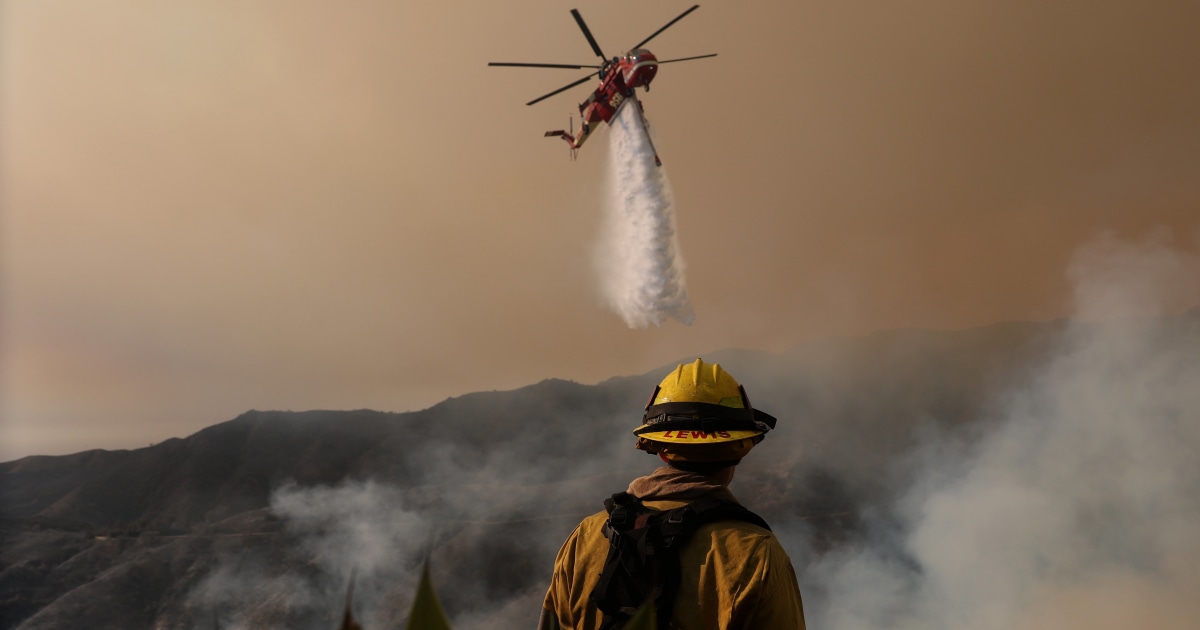Understanding Santa Ana Winds: A Looming Fire Threat Unveiled
As the Santa Ana winds sweep through Southern California, officials have raised alarms regarding the heightened risk of wildfires. These powerful, dry winds, originating from the inland desert regions, can dramatically increase fire danger across local communities. With the gusts expected to persist until Wednesday evening, it’s crucial for residents to understand the implications of these winds and the necessary safety measures to take.
What Are Santa Ana Winds?
Santa Ana winds are seasonal weather phenomena characterized by strong, dry winds that typically blow from the east or northeast toward the coast. These winds are most common in the fall and winter months, particularly in southern California. They form when high-pressure systems develop over the Great Basin and push air down the mountain slopes, compressing and heating it as it descends.
The unique conditions created by Santa Ana winds contribute to a variety of weather effects, including:
- Increased Temperature: As the air descends, it warms rapidly, often leading to unseasonably hot conditions.
- Low Humidity: These winds are typically accompanied by a drop in humidity, which can dry out vegetation and make it more susceptible to ignition.
- High Wind Speeds: The winds can reach speeds of 40 to 60 miles per hour, creating dangerous conditions that can spread fires rapidly.
The Fire Risk Amplified
When Santa Ana winds are in effect, the risk of wildfires escalates significantly. The combination of dry air, high temperatures, and strong winds can turn a small spark into a raging inferno in a matter of minutes. This is especially concerning for areas that have experienced drought or where vegetation has dried out.
Officials warn that during this period, fire risks remain elevated. In recent years, several devastating wildfires in California have coincided with Santa Ana wind events, highlighting the urgent need for preparedness.
Community Impact and Preparedness
For local communities, the implications of Santa Ana winds are profound. Residents are encouraged to take proactive measures to safeguard their homes and families. Here are some important steps to consider:
- Create a Defensible Space: Clear away dead vegetation, leaves, and debris around your home. Maintain a buffer zone of at least 30 feet to reduce fire risk.
- Prepare an Emergency Kit: Have a ready-to-go kit that includes essential items such as water, non-perishable food, medications, and important documents.
- Stay Informed: Keep abreast of weather updates and fire advisories. Utilize local news and weather apps to stay informed about changing conditions.
- Have an Evacuation Plan: Identify multiple routes out of your area and establish a meeting point for family members if evacuation becomes necessary.
Government and Fire Department Preparedness
Local government agencies and fire departments also play a critical role in wildfire prevention and response. During Santa Ana wind events, these agencies typically enhance their readiness through:
- Increased Staffing: Fire departments may increase personnel and equipment on standby to respond to fires quickly.
- Aerial Support: Aircraft may be deployed for aerial firefighting efforts, particularly in remote areas where ground access is limited.
- Public Education Campaigns: Community outreach efforts are ramped up to educate residents about fire safety and preparedness measures.
Personal Experiences and Community Stories
Many residents in Southern California have firsthand experience with the dangers posed by Santa Ana winds. Stories abound of close calls and devastating losses. For instance, a resident from Ventura County recounted how a small fire ignited in their backyard during a wind event, rapidly spreading and threatening their home. Thanks to prompt action and an emergency plan, they were able to evacuate safely and alert neighbors.
Such personal experiences underscore the importance of community vigilance and preparedness. Engaging with neighbors and sharing strategies for fire safety can foster a sense of solidarity and enhance overall community resilience.
Looking Ahead: Climate Change and Fire Risks
As discussions around climate change continue, the relationship between changing weather patterns and wildfire occurrences cannot be ignored. Experts suggest that climate change is intensifying the conditions that lead to Santa Ana winds, increasing the frequency and severity of these wind events.
In light of this, long-term strategies for fire prevention will need to evolve. This includes:
- Forest Management: Implementing better forest management practices to reduce fuel loads in wildfire-prone areas.
- Building Codes: Updating building codes to ensure new structures are fire-resistant and equipped with fire safety systems.
- Community Engagement: Encouraging ongoing community dialogue about fire preparedness and resilience in the face of changing climate conditions.
Conclusion
In summary, as Santa Ana winds sweep through the region, the looming fire threat they pose is a serious concern for local communities. By understanding the nature of these winds and taking proactive safety measures, residents can significantly reduce their risk during this critical period. Collaboration between individuals, communities, and local agencies is essential to build resilience against wildfires.
With awareness and preparation, the threat of Santa Ana winds can be managed effectively. Together, communities can weather the storm and safeguard their homes and families against the dangers of wildfire.
See more Your Daily Weather



